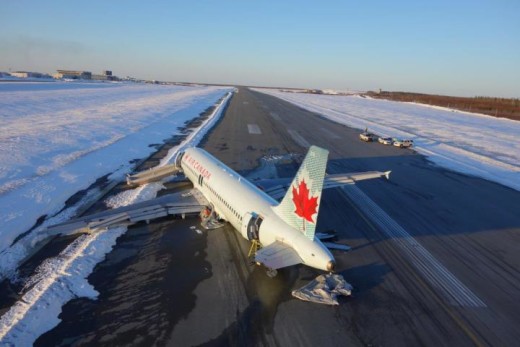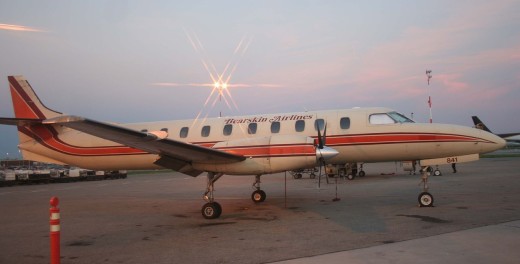 Scroll Down to see all of this week’s updates
Scroll Down to see all of this week’s updates
TC Bans Air Show Pilot From Practicing

Transport Canada says air show pilot Super Dave Mathieson can’t practice at his home airport of Chilliwack, B.C. anymore because he might be scaring livestock.
According to the Chilliwack Progress, TC sent the performer a letter April 8 telling him he can’t do aerobatics at the airport below 2,000 feet AGL even though he has all the permits and waivers necessary for low-level aerobatics.
After some people in Chilliwack complained about the noise he makes during his twice-daily practice sessions, TC decided the special flight operations certificate he has allowing low level aerobatics “is inappropriate and will be considered a violation” if he exercises it at the local airport.
“I am now stopped in my tracks,” Mathieson said. “As an air show pilot, if I can’t do these manoeuvres that take me almost to the surface, I can’t prepare for the air shows.”
He can’t do it just anywhere because all his timing marks and reference cues are on the runway and he needs those marks to practice the routine.
TC said it was the Chilliwack Airport Authority that opposed the practice but the airport is one of Mathieson’s sponsors and officials deny they have opposed the flights.
Airport manager Garry Atkins said TC made the decision without consultation with him or Mathieson.
“We wish we had been invited to be a part of those discussions, but we weren’t,” said Atkins.
“We fully understand the needs of people to have quiet, peaceful enjoyment of their lands. On the other hand we have to balance the fact that Mathieson needs to practise at an airport. It’s hard to balance.”
Class Action Suit in Halifax Crash

A Nova Scotia law firm has launched a $12 million class action lawsuit on behalf of 133 passengers aboard an Air Canada A320 that crashed at Stanfield International Airport near Halifax in March.
MacGilivray Injury and Insurance Law names Air Canada, the pilots on the flight, Nav Canada and the Halifax International Airport Authority for their respective roles in the undignified end of a rough flight from Pearson to Halifax on March 29.
“Through this claim and the TSB investigation our clients hope to be able to access information about what problems contributed to the crash,” said attorney Jamie MacGillivray in a statement. “Our clients believe based on the known facts that there was likely negligence on the part of the Defendants.”
The aircraft landed on the localizer antenna, 1,000 feet ahead of the threshold for Runway 05, damaging the airframe and ripping off the landing gear before bouncing and finally stopping about 1,000 feet down the runway. No one was seriously hurt although a few people were kept briefly in hospital.
The suit says NavCanada shouldn’t have cleared the flight to land in the wind and blowing snow and should have warned the crew that their approach was wrong.
It also claims the airport authority didn’t adequately monitor runway conditions and was operating a runway “with an inadequate instrument landing system.” Runway 05 has only a localizer approach while the opposite Runway 23 has a Cat II ILS. Runway 05 was in use because of the high winds.
Air Canada has already given every passenger $5,000 for their inconvenience and other lawyers have said that accepting the money won’t prejudice their ability to sue.
Toronto Wants To Regulate Hobby UAS

Toronto City Council’s executive committee is hoping the city will be able to pick up where Transport Canada has left off in regulating the use of unmanned aerials systems (UAS)
On Tuesday the committee directed staff to come up with a “strategy governing the use of drones in the City of Toronto’s outdoor spaces.”
Transport Canada issued rules governing the commercial use of UAS lighter than 25 kg. in November but Toronto’s rules would be aimed at recreational users.
“The City of Toronto is responsible for an enormous amount of outdoor spaces including road, sidewalks, parks and recreation facilities such as soccer fields, rinks, basketball courts and golf courses,” said Coun. James Pasternak in a letter to the committee. “City Council is seeking clarity for the use of drones over City of Toronto outdoor spaces.”
Toronto resident Miroslav Glavic told the committee that regulating airspace is out of the city’s jurisdiction and that privacy concerns are baseless.
“When you are in public, you have no right to privacy,” Glavić said.
Engine Loss on Final Caused Accident

The Transportation Safety Board has concluded that the loss of power in one engine led to the crash of a Bearskin Airlines Metroliner near Red Lake Airport in November of 2013.
The TSB’s final report on the crash says the slow speed combined with the sudden asymmetrical thrust led to the crash, which killed the pilots and three of five passengers
“The crew was unable to identify the nature of the engine malfunction, preventing them from taking timely action to control the aircraft. The aircraft’s landing configuration generated higher drag which, combined with the engine malfunction, resulted in the aircraft losing airspeed in an asymmetric power state. As the aircraft slowed, the crew lost control at an altitude from which a recovery was not possible,” the report said.
The plane hit trees and powerlines before catching fire. After the crash, the operator, engine manufacturer Honeywell and Transport Canada issued guidance highlighting the need to immediately feather the props on malfunctioning engines.
